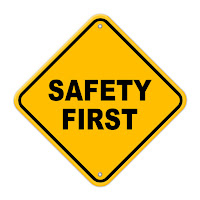Conducted this spring among APHA members and the general public, the informal survey found that 85 percent of respondents don’t know their community’s evacuation plans, and almost 58 percent don’t have evacuation plans for their home.

The survey assessed preparedness by asking respondents whether they had a communication or evacuation plan; food, water or supplies set aside; or plans set in place in households, workplaces and schools. The survey was a follow-up to a similar 2006 Get Ready survey, which also found many people were not following preparedness recommendations.
The 2017 Get Ready survey found that less than 37 percent of respondents said they know about government communication and emergency plans in their area. About 41 percent of respondents don’t know whether their friends or neighbors have special needs and might require help during disasters.
People know they can do better. About 63 percent of people said they’re aware they should take more steps toward being prepared, in fact.
The good news is that the Get Ready campaign is here to help. Our fact sheets, infographics and blog can help you improve your readiness.
They can also help give you the knowledge to be able to protect others in an emergency, an issue that concerns over half — almost 55 percent — of survey respondents.



